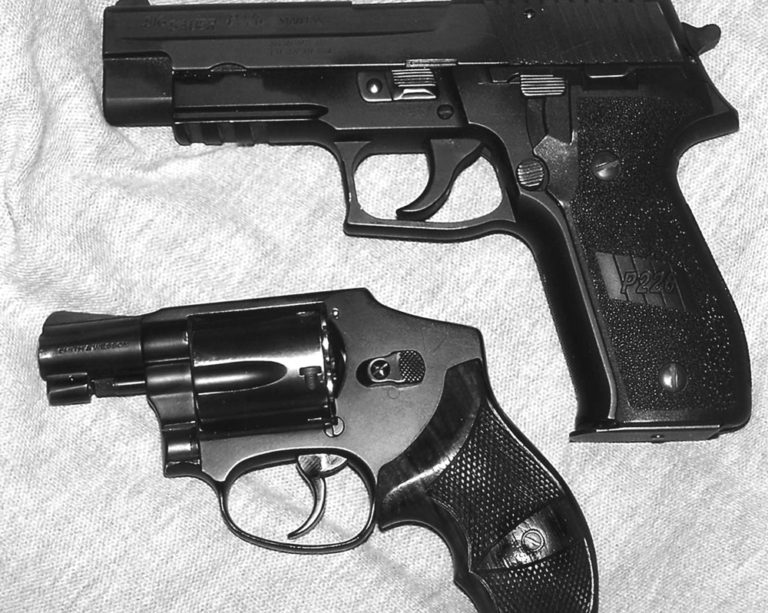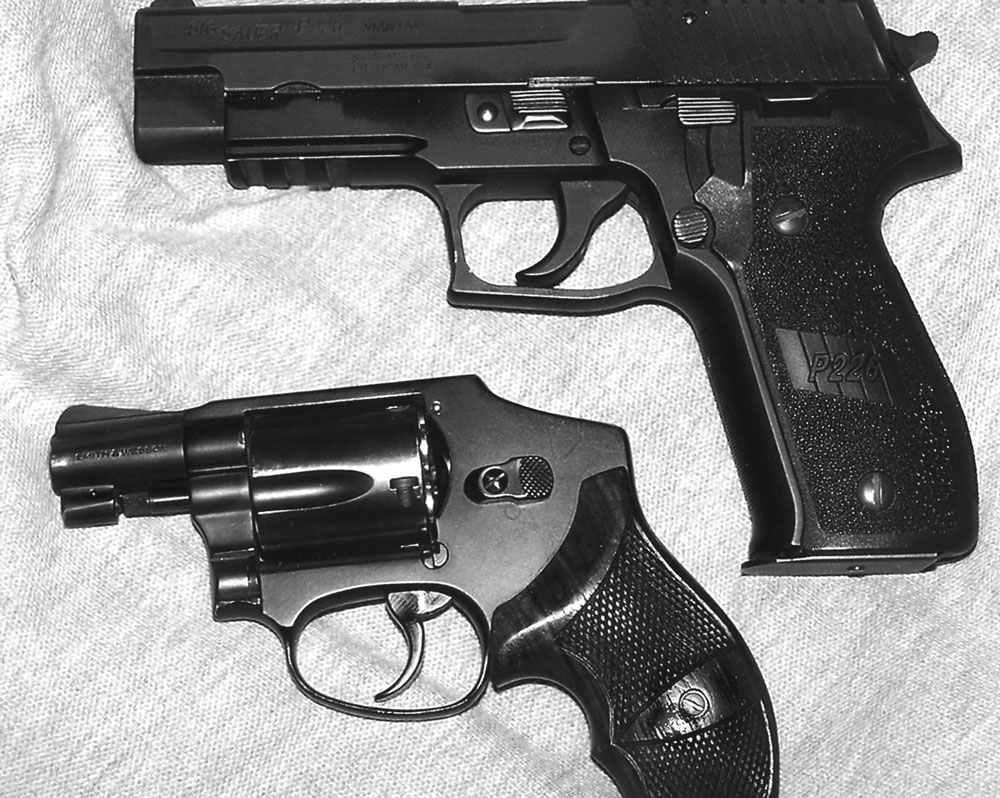

“Gentlemen, Choose Your Weapons”
There are several different approaches to the selection of backup guns. Predictable danger, wardrobe, training and familiarity already ingrained, and other situational factors will determine what might be the best approach on any given occasion.
On “heavy days” – i.e., high-risk situations – a pair of full-size fighting handguns makes sense. There is lots of historical precedent for this. On the Western Frontier, gun-wise lawmen from Wild Bill Hickok to Wyatt Earp carried a brace of sixguns. That is, a matched pair. Hickok wore twin Navy Colt .36 caliber cap-n’-ball revolvers, and allegedly “freshened” them daily by firing each charge in each chamber every morning in a short practice session, and then reloading with fresh powder, ball, and caps. Earp wore a pair of Colt Single Action Army revolvers, caliber 45 Colt.
Similar practices were seen in more modern times. On the night he and his team took down John Dillinger, FBI Agent Melvin Purvis was said to have been carrying a pair of Smith & Wesson Military & Police 38 Specials. That significantly outgunned the Colt Pocket Model 380 Dillinger was carrying, though it is believed that a 45 ACP bullet from the Colt Government Model of another agent was what actually killed FBI’s “Most Wanted” fugitive that night in Chicago.
Decades later the most famous member of the NYPD Stakeout Squad, Jim Cirillo, went to work each day with essentially the same gear carried by Purvis, though by then that particular Smith & Wesson was known as the Model 10. Each of Jim’s was a four-inch, with a heavy barrel on the strong-side hip and a tapered barrel version worn cross-draw as backup. Jim actually had one more backup gun on each occasion, a Colt Cobra 38 with a hammer shroud and two-inch barrel, carried in a pocket, and usually had a 14-inch barrel Ithaca 12-gauge shotgun handy to start things off.
Because most days aren’t heavy days, a much more common paradigm has long been the full-size, serious-caliber “combat handgun” as primary weapon, with a smaller and sometimes less powerful handgun for backup. Generations of cops have used tiny 25 autos for backup. While they are better than nothing, these guns are infamous for their poor stopping power, and being very tiny, they also tend to be difficult to manipulate under stress. Long before that, it was popular for lawmen to carry a six-shooter as primary, and a two-shot derringer as secondary. The derringer, fortunately, has pretty much passed from the scene.
Today, tiny 32 autos like the Seecamp, the North American Arms Guardian, and the irresistibly slim and light Kel-Tec P32 have found their way into backup position on the bodies of many police officers and armed citizens alike. In common with their predecessors, they are better than nothing, but they are also feeble in terms of the power they can put out. It is significant that when police departments issue backup guns, they normally look for something more powerful.

![Best Concealed Carry Guns In 2025 [Field Tested] Wilson Combat EDC X9S 1](https://gundigest.com/wp-content/uploads/Wilson-Combat-EDC-X9S-1-324x160.jpg)


![Best 9mm Carbine: Affordable PCCs [Tested] Ruger Carbine Shooting](https://gundigest.com/wp-content/uploads/Ruger-Carbine-Shooting-100x70.jpg)
![Best AR-15: Top Options Available Today [Field Tested] Harrington and Richardson PSA XM177E2 feature](https://gundigest.com/wp-content/uploads/Harrington-and-Richardson-PSA-XM177E2-feature-100x70.jpg)
